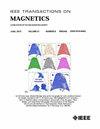基于神经算子的磁滞建模
IF 2.1
3区 工程技术
Q3 ENGINEERING, ELECTRICAL & ELECTRONIC
引用次数: 0
摘要
磁滞建模对于理解磁性器件的行为、促进优化设计至关重要。迄今为止,基于深度学习的迟滞建模方法在推广到新的输入磁场方面面临挑战。本文通过提出神经算子,通过学习磁场之间的映射来建模表现磁滞的本构律,从而解决了泛化的挑战。特别是,三个神经算子-深度算子网络(DeepONet),傅立叶神经算子(FNO)和小波神经算子(WNO) -被用来预测新的一阶反转曲线和小回路,其中新颖意味着它们不用于训练模型。此外,提出了一种速率无关的FNO来预测不同于训练期间使用的采样率下的材料响应,以纳入磁滞的速率无关特性。数值实验表明,神经算子能有效地模拟磁滞,在各种指标上优于传统的神经递归方法,并能推广到新的磁场。研究结果强调了在不同磁条件下使用神经算子建模迟滞的优势,强调了它们在表征磁性材料基器件中的重要性。与本文相关的代码可从https://github.com/chandratue/magnetic_hysteresis_neural_operator获得。本文章由计算机程序翻译,如有差异,请以英文原文为准。
Magnetic Hysteresis Modeling With Neural Operators
Hysteresis modeling is crucial to comprehend the behavior of magnetic devices, facilitating optimal designs. Hitherto, deep learning-based methods employed to model hysteresis face challenges in generalizing to novel input magnetic fields. This article addresses the generalization challenge by proposing neural operators for modeling constitutive laws that exhibit magnetic hysteresis by learning a mapping between magnetic fields. In particular, three neural operators—deep operator network (DeepONet), Fourier neural operator (FNO), and wavelet neural operator (WNO)—are employed to predict novel first-order reversal curves and minor loops, where novel means that they are not used to train the model. In addition, a rate-independent FNO is proposed to predict material responses at sampling rates different from those used during training to incorporate the rate-independent characteristics of magnetic hysteresis. The presented numerical experiments demonstrate that neural operators efficiently model magnetic hysteresis, outperforming the traditional neural recurrent methods on various metrics and generalizing to novel magnetic fields. The findings emphasize the advantages of using neural operators for modeling hysteresis under varying magnetic conditions, underscoring their importance in characterizing magnetic material-based devices. The codes related to this article are available at
https://github.com/chandratue/magnetic_hysteresis_neural_operator
.
求助全文
通过发布文献求助,成功后即可免费获取论文全文。
去求助
来源期刊

IEEE Transactions on Magnetics
工程技术-工程:电子与电气
CiteScore
4.00
自引率
14.30%
发文量
565
审稿时长
4.1 months
期刊介绍:
Science and technology related to the basic physics and engineering of magnetism, magnetic materials, applied magnetics, magnetic devices, and magnetic data storage. The IEEE Transactions on Magnetics publishes scholarly articles of archival value as well as tutorial expositions and critical reviews of classical subjects and topics of current interest.
 求助内容:
求助内容: 应助结果提醒方式:
应助结果提醒方式:


